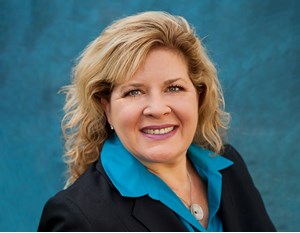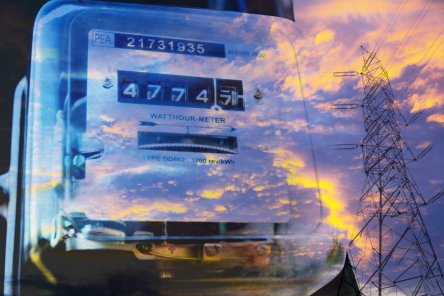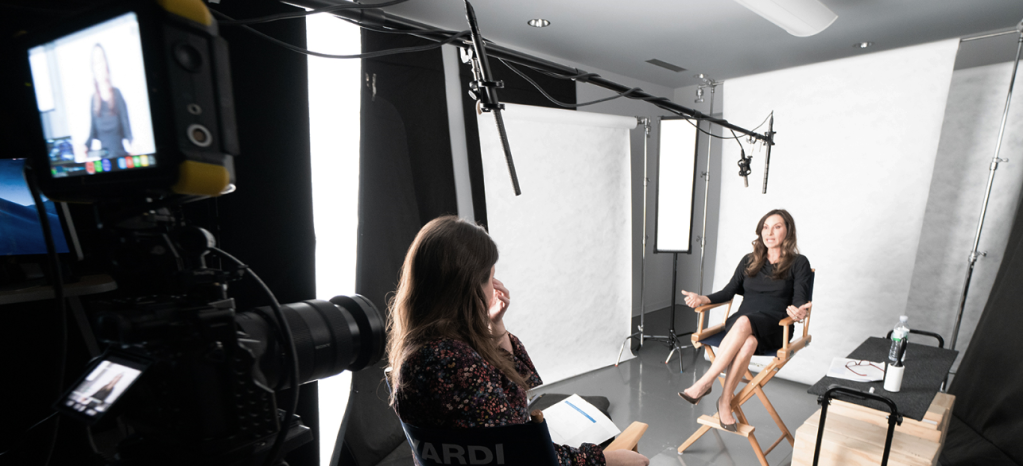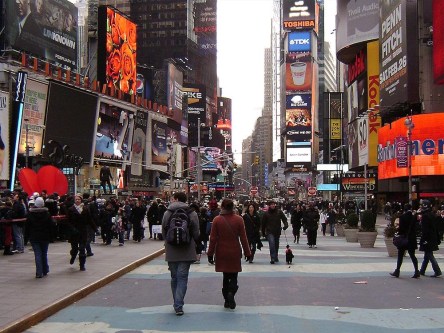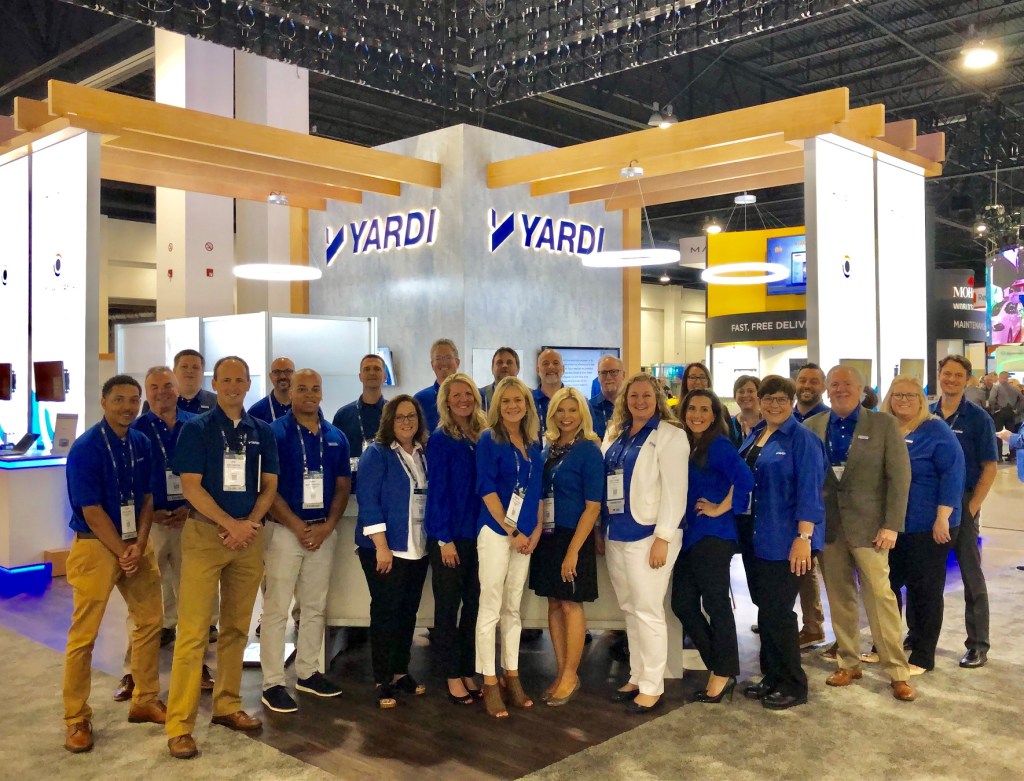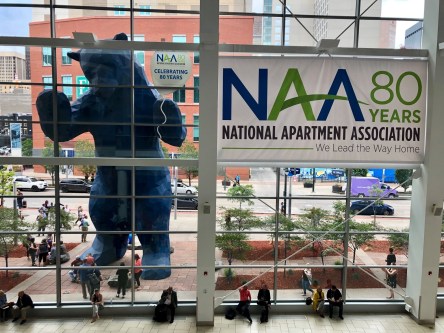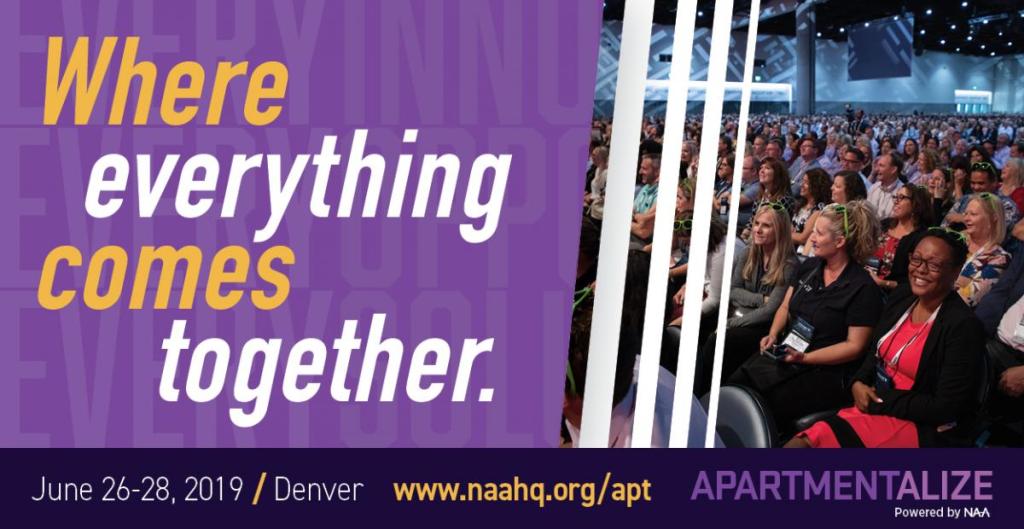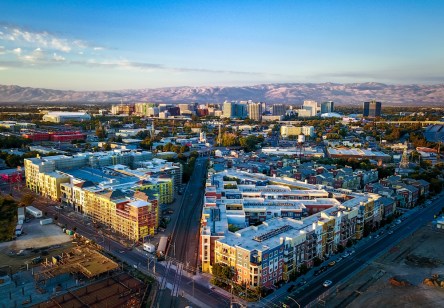Units are getting smaller as apartment buildings grow larger for the first time in history. Interestingly, these large buildings are indicative of the nation’s troubled relationship with rental housing Characteristics of New Housing Report Bloomberg reports that developers completed 211,000 new housing units in about 2,000 buildings with 50 or more units. That’s the largest boom on record since the late 1960s when the survey began. Bloomberg sourced its data from the Characteristics of New Housing report issued by the Census Bureau in partnership with the U.S. Department of Housing and Urban Development. For nearly 50 years, firms focused on developments with 50 or fewer units. As land prices rise, footprints are growing smaller. Apartments are also getting smaller. In 2018, the median size of multifamily units built for rent was 1,081 square feet. That’s 500 square feet smaller than units constructed in 2008. Why Bigger Isn’t Better Smaller buildings have not fallen out of favor with consumers. Rather, the shift towards fewer but larger apartment buildings is indicative of dysfunction in the industry, hypothesizes Justin Fox, financial journalist with Bloomberg Opinion. “Growing regulatory burdens, rising construction costs, and the increasing role of large institutional investors in housing-development finance have tipped the scales in favor of big projects,” he said. He continues, “zoning rules and opposition from would-be neighbors in residential areas have left urban and suburban commercial districts and exurban greenfields as about the only locales open to new housing.” The fallout: neighborhoods are welcoming a few large-scale new developments or no developments at all. Finding Ground for the Middle Ground Mid-sized developments don’t have ground to stand on. Barriers to construction have stifled the growth of multifamily construction overall. Small and mid-sized projects were the first to take the axe. In short,...
On Brand
Property branding tips & tricks
You’ve got the location, the amenities, the staff and the software you need to manage your properties. So what’s missing? Why are apartments sitting vacant and renewals at an all-time low? It might be time to reconsider your brand. In this age of customer experience, your brand is critically important. It sets customer expectations for an experience that matches. According to a recent PwC survey, customers are willing to pay as much as 16% more for a better customer experience. Adding weight to that, a Walker study found that by the year 2020, customer experience will overtake price and product as the key brand differentiator. Executed correctly, your brand will help you get (and keep) more residents, support rent increases and beat the competition. But without a cohesive brand, you can’t compete. In the words of Brenda Studt, VP / Creative Director at Excelsior Creative, an affiliate of The Excelsior Group, “If you don’t have a brand strategy, you’re building a house without a foundation. It’s really just a house of cards.” Tweet this. At TEG’s Creative Studio, Brenda helps real estate clients, both residential and commercial, ] build and transform their brands. We asked her to share some property branding tips and tricks with us to help you create better customer experiences, whether you’re working on a new lease up or rebranding an existing asset. What services does TEG’s Creative Studio provide? Brenda: We’re a boutique agency with a focus on storytelling for real estate-related business. Our services include branding, digital experience design, print design and marketing strategy. Branding is my favorite. We offer target audience analysis, muse creation, naming, copywriting and brand element creation, including colors, typography and logo design. What is a brand strategy? Brenda: I’m sure other people will define...
Home Smart Home
Must-Have Amenities
Wondering how to make your property more desirable in a competitive market? Research shows that today’s renters (especially millennials) would rather have high tech amenities than a pool or gym. And, they’ll pay more for a smart apartment that offers technology services on demand. Why? Smart apartments make life easier by keeping you connected, automating daily tasks, reducing costs through more efficient use of utilities and freeing up time for the things you really enjoy. Living in a smart apartment is like having a remote to control almost everything in your home from a phone. According to the 2018 NMHC Multifamily Disruption Report, “As real time and personalized purchasing experiences become the norm, a lifestyle-focused apartment is as important as location and layout.” Are you offering today’s most-wanted amenities? And going a step further, are you future-proofing your community with technology? Smart stuff To sign more leases with quality residents who are likely to stay for a while, you should cater to their needs on a lifestyle level by going beyond basic online services. Here are some of the most popular tech amenities that you can offer (and brag about in your marketing) now. Keyless locks Smart locks provide convenience and security with keyless entry into apartments via touchpads and mobile apps. They also log when someone enters and leaves a unit. Residents can remotely authorize access to house cleaners, dog walkers, maintenance staff and visitors. Smart locks can also alert residents whenever their door is opened — and can be connected to a security system for additional protection and peace of mind. Thermostats One of the most wanted amenities is a smart thermostat, which enables residents to control their apartment climates remotely. Since heating and cooling accounts for nearly half of a property’s...
Sustainable Fun
Gamification of Energy
Want to cut costs across your portfolio while improving environmental conditions for future generations? Of course you do. You can achieve both when you turn sustainability initiatives into games that get residents and tenants involved. The basic tools below can help you get started today. Gamification: Undercover Education (and Self-Help) Meetings, lectures, and classes on saving energy rarely alter our habits. Feedback, seeing the results of our actions often in real-time, has proven to help to change habits. That’s where gamification fits into your energy-saving strategy. What is gamification? In short, it’s implementing game design elements in non-game contexts. It’s making something that tends to be unexciting and intangible more exciting and interactive. Copernicus Institute of Sustainable Development in the Netherlands published research on the gamification of energy savings. Researchers concluded that solely issuing smart meters in buildings did not result in optimal energy savings. It was also necessary to change residents’ energy usage behavior. Games proved to be an effective way to heighten awareness and alter user habits. Historically, residents and tenants are slow to change comfortable behaviors even if we know that we can save money. That’s because changing our behaviors takes effort, such as closing blinds before we leave the building to minimize radiant heat or using an app to turn off lights and outlets. None of those tasks takes much effort. But any task is yet another thing to do in a world where we already feel too busy! Gamification helps to take the effort out of changing our comfortable behaviors and makes conserving resources more entertaining. Copernicus Institute details the following components for effective gamification of energy savings. What Makes Gamification Successful? Gamification can be simplified for both commercial and multifamily properties. The American Council for an Energy Efficient...
Trimming Turnover
5 Tips for Leasing Offices
The turnover struggle is real. Multifamily leasing offices face a turnover rate from a conservative 21 percent to a jaw-dropping 54 percent. Why might promising talent abandon ship? To decrease your turnover rate, you’ve got to identify what’s ailing your staff. End inadequate training Job training can be costly and time consuming. Filling a job posting cost about 6-9 months’ salary per the Society for Human Resource Management. That’s thousands of dollars and dozens of hours to identify, interview, and train a new hire. It’s tempting to put another body in the seat, give them a quick training and hope for the best—half expecting they won’t last long, anyway. Unfortunately, inadequate training contributes to the turnover issue. To be successful, employees need a firm grasp of their responsibilities and how to fulfill them. An online learning platform makes staff training more efficient, cost effective and consistent. You can customize classes to reflect your brand and role-based responsibilities. Staff can then learn at their own pace and, unlike live trainings, staff can review materials as needed. Assessments give leadership insight into areas where staff need additional guidance. Reward excellence, nurture opportunities When you track the performance of your sales team, you can learn a lot: which team members are pulling their weight, which aren’t, and where in the sales cycle prospects fall off. Use the first data set to reward high performers. The latter two points can help you reexamine training procedures and ineffective workflows. Make team building fun Interpersonal tension contributes unnecessary stress to workplace dynamics. Team building promotes better communication, creativity, and trusting relationships. Engage in corporate philanthropy to help team members work together on creative projects and reach goals together. Simultaneously, you’re making your community an even better place to live and...
Intentional Retention...
Personalizing Your Community
As a property management software provider with tons of solutions at hand, we’re proud to say that there are few property issues that technology can’t address. While tech is a terrific way to enhance the renter experience, zeros and ones have their limits. Some important components of community building require the human touch. Your ability to personalize the community experience links directly to resident retention and a healthy bottom line. Yardi client Pegasus Residential demonstrates how to personalize a memorable property experience to promote retention and drive revenue. It Starts with Your Reputation A smooth user experience, great photos and easy leasing options are a necessity in today’s online marketplace. But poor reviews and a bad reputation will quickly defeat your best efforts. Online reviews and reputation “will make or break a community and single-handedly increase traffic and occupancy,” says Wendy Dorchester, Pegasus Residential’s vice president of operations. Reputation management is an essential part of your community’s success. There are services to manage online reviews. Your in-house team can catch resident concerns before they make it online. They can also influence your reputation in the offline community. Encourage attentiveness and responsiveness amongst your leasing team, advises Dorchester. Online surveys are another good way to intercept concerns before they make it online or into the rumor mill. Build Up Your Image According to online technology news source TechCrunch, more than 90 percent of apartment hunters begin their search online. Few sign a sight-unseen rider, which means most will visit your property before committing to the lease. Curb appeal and staff representation matter. Stay on top of landscaping and building maintenance. “A community’s curb appeal is critical, too, as a prospective resident’s first impression of a community upon visiting has a huge impact,” says Dorchester. She...
Hurricane Season
Resources for Property Managers
We are amid yet another hurricane season. (Along the east coast and the Gulf of Mexico, Hurricane season runs June through November). As recent history has taught us, locations that rarely experienced damages in the past are now at notable risk. The resources below can help owners of mixed portfolios take precautions to reduce risks to occupants and property. Rising Risks Overall, the cost of hurricane season has increased over the past several decades. Cost increases are beyond the normal adjustments for inflation. Storms are causing more widespread damages for a complicated combination of reasons. Data sets from the National Oceanic and Atmospheric Administration (NOAA) and Environmental Protection Agency (EPA) suggest that warmer oceans fuel stronger hurricanes. Rising sea levels also contribute to more catastrophic flooding. Poor graywater management and diminishing green spaces broaden flood zones and prolong the time it takes for floodwaters to recede. What might this mean for you? Properties outside of recognized flood zones face greater risks than they did 20 years ago. Properties that were not impacted by hurricane winds before may now need additional protections. Fortunately, it’s not too late to minimize risks to your properties and their occupants. Advanced Preparation Take time to review your insurance information. Ensure that your property is up to date on insurance coverage that includes flood protection. This will cover your property whether it is in the direct path of the hurricane or areas that experience flooding related to a far-off storm. Category 1 and 2 hurricanes sustain winds of 74-110 mph, per the Saffir-Simpson Hurricane Wind Scale. Be sure that your plan for storm damage includes winds of at least 74 mph for the most complete coverage. Hurricane Preparation to Reduce Risks to Mixed Portfolios Preparation is key to reducing damage...
Drive Revenue
With pet friendly policies
Permitting pets on your premises comes with its fair share of challenges. But with the right tools, permitting pets can also help to drive revenue by attracting renters and promoting resident retention! The tips below can help you create a pet-friendly property that adds value to the renter experience. Start with the basics—welcome pets! According to the National Apartment Association, more than 70 percent of renters own pets. Yet 82 percent of renters report difficulty in finding apartments that accommodate them and their furry companions, reports PetFinder.com. By accepting pets, you gain a competitive edge that can help to improve occupancy. Designate space for a leash-free dog run. You know that unused land near the retention pond? Or that plot near the trash receptacles? Aesthetic fencing and landscaping help to transform unused portions of land into a valuable dog park. This gives pets a space to burn off energy rather than chewing on door frames. Dog parks also increase the perceived value of your property. Pet-friendly properties with dog parks can charge a rent premium between 20 percent and 30 percent higher than the average rent. Create a pet-friendly atmosphere. Sometimes, the fine details can help prospects and their pets feel at home in your community during tours. When prospects see dog bowls at the park, treats in the leasing office, and a pet wash station, they can sense that they will be a welcomed and integrated part of the community. Host pet-friendly events. A sense of community promotes resident retention. Pet events give renters opportunities to socialize and feel that they belong. They’re are also fantastic photo ops! Got pictures of residents interacting and having fun with their pets? You’ve got marketing gold. Use such content to foster leads on social media. Fine-tune...
Energy Automation
Pinnacle Uses Yardi Energy
Dallas-based multifamily community manager Pinnacle sought to reduce utility late fees and increase vacant utility cost recoveries at 170,000 residential units that it manages. “We needed to automate the entire process—payables, receivables, consumption data analysis and reporting that drilled down to a granular level of detail,” said Nicole Ellery, the company’s ancillary performance manager. Doing all this required replacing its cumbersome manual utility consumption tracking and billing with the Yardi Energy Suite. One element of the suite, Yardi Utility Expense Management, receives, validates and completes payments for Pinnacle’s utility bills. Another part, Yardi Utility Billing, monitors and bills residents for their utility consumption, which helps the company recover vacant unit costs, monitor usage, forecast utility revenue and cut waste with consumption alerts. How has the Yardi Energy Suite worked out for Pinnacle? The bottom line, Ellery said on a utility expense management panel at the most recent Yardi Advanced Solutions Conference (YASC), is “lower late fees across the board.” That happened because the comprehensive solution for utility billing, energy management and submeter data administration helps the company “track how properties are performing with line-by-line data down to the individual meter level as opposed to only invoice data.” “When we onboard a new property, we can see red flags such as high consumption on a meter and follow up with an investigation,” Ellery said. “Our property managers and accountants can drill down to each general ledger account and invoice if anything looks off and see what’s going on. We can see gradual increases in consumption and process invoices as soon as they come in.” She added, “We have saved thousands of dollars every year by nearly eliminating late fees. The suite vastly simplified our vacant unit recovery process, so it maximizes income too. We’d be...
Win at Branding
For Canadian Portfolios
Want to amplify your marketing returns and build a loyal customer base? Developing a strong brand identity can help you do both. Whether you’re an established midsized business or a burgeoning small company, it’s never too late to strengthen your brand identity. We attended the Canadian Federation of Apartment Associations conference with Sam Amin, marketing manager at Yardi, to learn more about creating a brand. What is a Brand Identity? Brand identity is more than your logo and color templates. Those are important, but your brand extends beyond what you can see and touch. At its foundation, a brand is a distinguishing mark, such a logo and other design choices. It tells us the source (company) behind a product (multifamily community). But as the “father of marketing” David Ogilvy explained it, the brand is “the intangible sum of a product’s attributes.” That means that your brand is also a set of associations connected to your business based on facts, emotions, and customers’ aspirations. How to Create Your Brand There is no need to reinvent the wheel. Amin recommends choosing from several branding formulas online to help you get started. Most formulas will require you to carefully articulate who you are and identify your customers and competitors. You’ll need to determine the type of community that you want to provide for your renters, physically and socially. As you work through each piece of the formula, be specific and authentic. Select messaging that feels natural even if (and especially if) it’s an unexplored angle for real estate. Your Brand—Everywhere, All the Time For the greatest impact, keep your brand in front of audience’s eyes. Be consistent with your messaging and steady with fresh marketing efforts that convey your messaging. “Use all your marketing tools including SEO,...
IoT in Multifamily
Takeaways from CFAA
During the Canadian Federation of Apartment Associations (CFAA) annual conference, attendees walked away with a powerful call to action: understand the role of the Internet of Things (IoT) in your business before implementing. Fulfilling this objective can lead to success for multifamily firms of all sizes. What is the Internet of Things? The IoT embodies a multitude of devices that are connected to the internet. These devices range from smartphones to home automation and even wearable fitness monitors. Such devices can be controlled remotely and interact with other devices. In many cases, devices connected to the internet also gather and store user data to contribute to machine learning. Masa Hoshino, product manager at Yardi, explained that three components drive change in the IoT on the consumer level: hardware, software and culture. Hardware, like a smart refrigerator, may use wireless connectivity to automatically set the time on the clock. Software, such as apps installed on that fridge, is designed to solve a problem and provide a better user interface such as peeking in when grocery shopping. Lastly, the convenience of internet connectivity has made it a necessity for consumers. Connectivity increases the perceived value and functionality of hardware and software—and a home. How Does the IoT Impact Real Estate? In real estate, consumer culture and corporate benefits demand the integration of the IoT in our properties. Smart homes offer convenience, entertainment, and the potential for lower utility bills. While a home with multiple smart features is desirable for modern renters, multiple apps to control those features is very undesirable. True efficiency entails a single, reliable app that connects residents to their smart homes and property management through a secure user portal. For property stakeholders, the IoT can also be used to promote greater efficiency and...
Meet Melise Balastrieri
MG Properties Group
How do you get more renters to your websites? Just ask Melise Balastrieri, vice president of marketing for MG Properties Group. Using the RentCafe Suite, Melise and her team manage the marketing for more than 20,000 apartment homes across five states. First, Melise uses RentCafe to create engaging property marketing websites. Then she drives more prospects to those websites using the expert SEO services of RENTCafé Reach. Once leads become prospects or residents, she relies on RentCafe CRM to keep them engaged. Keep reading to see how Melise makes it all work together. What is MG Properties Group’s mission? Melise: Our mission is enriching lives through better communities. And we believe that we do that with every single interaction that we have, whether it’s with a team member, our residents or our investors. What is one of your business objective in your role as vice president of marketing? Melise: A business objective that’s important to me is maximizing our use of technology in a way that affects our bottom line. That includes using it to get more leads that turn into leases. Because it’s not important just to have a lot of leads; you have to have leads that convert. How do you make SEO work for you? Melise: We use RentCafe Reach services to manage our SEO. We establish our goals based on the type of community we have, and our SEO specialist optimizes to make sure we’re attracting the leads most likely to convert. After all, we don’t just want a high quantity of leads; we’re more interested in high quality leads. RentCafe Reach provides clear and consistent SEO reporting. We can see things like website sessions, views and bounce rates to determine if we want to make adjustments. It’s been working really nicely for us. After three years of strong consecutive growth, our organic sessions were up another 21% last year. How do you improve lead capture? Melise: To capture online renters that visit our property marketing websites, we use some features in RentCafe that I think are very impactful. For instance, we encourage prospects to text us and schedule their own tours. We also use nudge marketing. These tools help us get in front of leads and give them options to contact us in ways that work for them. Our most recent data shows that, overall, our leads convert at 11%. But our self-scheduled appointment leads convert at 14% and our nudge marketing leads convert at 27%. These features are proving quite effective. How do you follow up with leads? Melise: At MG Properties Group, we automate follow-ups as much as we possibly can. Leasing teams are so busy onsite that follow-ups can get forgotten. Using follow-up tools in RentCafe CRM, we know our prospects are being contacted. We’ll use automated appointment reminders and drip emails to make sure we’re staying in touch with prospects. We invite them to call, tour and ask questions. We also use automated emails to stay in touch with our residents and secure renewals. We check in throughout their lease. As the end of their lease term nears, we express appreciation for their residency and remind them that we would love it if they continued living with us. Why do you use Yardi? Melise: What I really like about having Yardi as our property management technology provider is that most of the services we need are available in one solution. So we can deal with one company. That helps us simplify things as an organization. What marketing trends are you most excited about? Melise: I’m most excited about artificial intelligence. I think it’s super exciting and am anxious to see what it’s going to do for our industry. For example, Alexa and other digital assistants, what are they going to do for us? Will they be able to host tours, collect rent and submit service requests for our renters? (Editor’s...
Rural Broadband
Tips for Multifamily Providers
Rural communities face a notable dilemma. Internet service providers (ISP) claim fast broadband coverage in remote areas but often fail to deliver. As a result, you struggle to offer efficiency to your staff, residents, and prospects. A few hacks can help you improve your broadband offerings until more permanent solutions arrive. Rural Broadband Setbacks Nearly 63 percent of rural Americans have purchased broadband internet connection but many struggle with connectivity issues. Towns with slow broadband face economic setbacks. High-speed internet is a foundational principal in modern businesses and institutions. Without it, commerce wanes. Reliable connectivity is needed to reach prospects and provide services for customers. To address the broadband overage gap, the Federal Communications Commission (FCC) set aside $4.5 billion in rural grants for broadband infrastructure improvements. The program stalled before it gained momentum. The FCC soon realized that there were major discrepancies between coverage maps issued by ISPs and functional coverage experienced by users. An investigation is underway to determine if carriers have violated rules and submitted incorrect coverage data. Coverage maps matter. Towns that are dubbed “well connected” are ineligible for FCC improvement grants. Yet businesses and residents of these towns have problems with basic functions like sending emails, streaming webinars, and using navigation around town. “Our maps simply do not reflect the state of deployment on the ground. That’s a problem,” explains FCC Commissioner Jessica Rosenworcel. “We have a digital divide in this country with millions of Americans who lack broadband where they live. If we want to fix this gap and close this divide, we first need an honest accounting of high-speed service in every community across the country.” Based on coverage maps submitted by ISPs, about 24 million people lack access to broadband at home. In contrast, an independent study...
Pedestrian Power
New Yardi Matrix Study
“Big city” usually evokes buses, motorcycles, metro trains and cars. Beyond looking pretty and offering temporary respite from the bustle, does walkability—the ability to walk from home to shopping, dining, entertainment and employment spaces—add tangible value? Very much so, according to a new report that Yardi Matrix joined forces on with industry, academic and advocacy leaders. The Center for Real Estate & Urban Analysis (CREUA) at the George Washington University School of Business sponsored a study this year to rank the 30 largest metropolitan areas in the U.S. by how much office, retail and rental multifamily space lies in walkable urban areas. Multifamily rental asking rent data from Yardi Matrix went into the four-month effort, which also included contributions from real estate services firm Cushman & Wakefield, community quality-of-life advocate Smart Growth America, and real estate developer and investor coalition LOCUS. Yardi also contributed a $10,000 grant to support the research. The CREUA study identified 761 regionally significant walkable urban places, or “WalkUPs,” in those 30 metros. New York City has the most walkable urban real estate, followed by Denver, Boston, Washington, D.C., Chicago and San Francisco. The report documents that: Income-producing real estate (office, retail and rental housing) in walkable urban places has a 75% per square foot rent premium over other such real estate in the metro area. For-sale homes within WalkUPs have a 90% premium compared to the regional median for-sale home price in the metro area. The per-capita gross domestic product of the highest-ranked walkable urban metros is 52% higher than that of the seven lowest-ranked metros. “There is a ‘Doppler shift’ toward walkable urban development in the 30 largest U.S. metros,” Dr. Tracy Loh, senior data scientist at the George Washington School of Business and co-author of the report,...
Apartmentalize, Answered
Day 2 in Denver at 2019 NAA Event
(June 27, 2019) – Yardi executives and clients brought their A game to Apartmentalize in Denver on Thursday, providing answers to pressing questions facing multifamily professionals. Read our day one recap here. The country’s preeminent apartment industry get-together continued at an energetic pace with a full day of sessions, featured speakers like actress/producer Mindy Kaling (The Office/The Mindy Project) and the NAA Expo, which opened Thursday afternoon for product demonstrations, giveaways and special interactive events. Kaling recounted her early days in New York City attempting to break into the acting and writing scene. She and her two best friends shared a railroad style apartment. Railroad style apartments have a series of connected rooms, making privacy near impossible. “I didn’t realize it at the time, but there’s one time in your life when you can share an apartment with connected rooms with your best friends, and it’s when you’re 21,” she shared. Kaling, now 40, also confided that she’d love to purchase an apartment building in New York City for her frequent work trips to the city. She couldn’t have found a more appropriate audience than 10,000 apartment managers and executives. Yardi is one of two Strategic Alliance Partners for the conference and a major contributor to the NAA Education Institute. A video that introduced the company at Thursday’s general session can be viewed below: Thursday night, conference attendees were bused to the Denver Performing Arts Complex for an epic outdoor party that included live entertainment, a silent disco, breakdancers, caricature artists, BMX riders, a slackline performance, photo booths, and food truck fare. But before party time, Yardi executives at Apartmentalize dove in to answer critical client questions in three insightful education sessions. Top Tech Trends for Better NOI Esther Bonardi, vice president of marketing at Yardi, moderated a panel including Garin Hamburger, senior director of national property marketing for Pinnacle; and Taylor Wiederkehr, director of innovation services for BH Management Services. The group explored emerging technologies disrupting the future of rental housing. They focused on artificial intelligence, machine learning and energy efficiency, and the impact of each on business operations and resident experiences. Over the last decade, energy efficiency and utility management have become hot topics in multifamily. For both NOI and the planet, “it’s a good chance for our industry to make an impact,” said Bonardi. In today’s technology-focused world, how can multifamily professionals tackle energy spend? Bonardi discussed the importance of having an energy strategy. Utilizing ENERGY STAR benchmarking, implementing energy management solutions, and installing IoT-enabled devices like smart thermostats which reduce costs and energy use. “There are 17 billion IoT devices currently connected. By 2025 that will double to 34 billion,” said Hamburger. “We’ll need to have it in all of our communities because it will be the norm.” Providing a basic IoT package – a smart hub, connected thermostat and upgraded outlets – has been beneficial for Pinnacle. The national multifamily housing provider has seen higher profits and been able to raise rents at IoT-enhanced properties. Hamburger shared that featured like self-guided tours and artificial intelligence for lead nurturing have resulted in cost savings and staff efficiency. BH Management Services has fully embraced the Internet of Things. At property refurbishments, the firm has installed smart home systems across its portfolio, capitalizing on control and convenience for residents. A self-proclaimed former skeptic of IoT-connected living, Wiederkehr advised that “IoT will be the foundation for the future of multifamily.” Resilience, Climate Change and Energy Use A panel moderated by Martin Levkus, regional director of sales for Yardi, focused on the threat of continued climate change and strategies for both reducing energy use and preparing for climate challenges ahead. Speakers Deb Cloutier, president of RE Tech Advisors, and Cindy Zhu, fellow at the U.S. Department of Energy, brought exceptional insight to the topic. “In the past, resilience and climate change hasn’t been a focus of conversation. Real estate...
Apartmentalize 2019
The people business
DENVER (June 26, 2019) – The National Apartment Association’s annual summer conference, Apartmentalize, got underway Wednesday at the Denver Convention Center. It’s the ultimate destination for multifamily professionals to get educated, engaged and inspired. But a consistent theme throughout the event’s opening sessions was not renting apartments or multifamily technology, but something far simpler: people. “I love this industry because we interact so intimately with our customers,” said Melissa Joy, vice president of Village Green. “Renting an apartment is the best or the worst day of someone’s life.” Making the experience as positive as possible for residents is Village Green’s constant goal, Joy explained. “We obsess over our residents and their happiness.” The theme of this year’s Apartmentalize is “Everyone. Together.” That spirit of inclusivity pervaded the educational sessions – which covered topics like fair housing, short term rentals, technology, management techniques, benchmarking, investment ROI, leasing best practices, workplace violence, apartment advocacy, reputation management and more. A highlight of Wednesday’s Living Room Learning, a series of quick TED talk-style presentations, was Heather Blume and her service dog MoonMoon, who bluntly addressed the negative reaction she has encountered to her certified service animal. “When you have a service dog, your disability is on display,” Blume confided. But MoonMoon has enabled her to overcome debilitating panic and PTSD attacks to travel, work and give speeches again. She urged multifamily professionals to consider the whole picture when considering renting to residents who rely on support animals. “Home is supposed to be a safe place, and we are home providers,” said Blume, a training and leasing consultant from Seattle, with MoonMoon calmly seated behind her on the stage. Wednesday concluded with a keynote address by Brandon Stanton, who you may have never heard of – but he’s the...
Screening with Tech
How Yardi can help
Finding the right residents for a community is a complex, critical part of operating a multifamily community, and it is vital to the long-term success of a property. Looking into a potential resident’s background is not as simple as running a credit check. Effective screening can play a pivotal role in risk mitigation by ensuring leases are only signed with qualified tenants. Yardi recently partnered with Equifax to enhance ScreeningWorks Pro, the company’s resident screening platform, and enable property managers to quickly verify a prospective renter’s employment and income details. Patrick Hennessey, Yardi’s vice president of resident screening, and Tyler Sawyer, vice president of rental and real estate with Equifax, discuss how tech can lead to more efficient and effective screening processes. What is the biggest challenge for effectively screening potential residents today? Sawyer: Data is vital for a landlord or property owner looking to identify the right resident. From a credit-reporting standpoint, we work to alleviate any perceived challenges by ensuring these parties have access to the best data, regardless of whether a potential renter has a robust credit file or is categorized as having thin credit or no credit. Without robust data insight, potentially strong tenant candidates can be left paying higher deposits, needing co-signers or being rejected altogether. Hennessey: Helping our clients overcome the challenges of effectively screening applicants is our business. Getting that right for both the applicant and the property is critical. A trend we’re seeing is the desire by landlords to make good decisions as quickly as possible—in near real time, if they can. For screening companies, this requires ensuring we can rely on the sources that provide us with consumer data. It means finding reasonable and reliable ways to do our job both effectively and efficiently. Editor’s...
Connect at NAA
Find Yardi at Apartmentalize
What do Mindy Kaling, David Rendall and real estate thought leaders — including experts from Yardi —have in common? They will be present to inspire and energize at Apartmentalize 2019. The apartment industry’s don’t-miss event of the summer — Apartmentalize 2019 powered by NAA — heads to Denver with exciting industry education opportunities for multifamily providers of all sizes. The event is set for June 26-28 at the Colorado Convention Center. Yardi will be there to provide attendees with answers to pressing real estate questions during three expert-led educational sessions and one-on-one meetings in the Yardi booth. Read on for the top three ways to connect with Yardi at Apartmentalize. Attend Educational Sessions How do you excel in apartment management? Three Apartmentalize sessions hosted by Yardi executives promise to deliver compelling answers on Thursday, June 27: Get Smart: Top Tech Trends for Better NOI will be moderated by Esther Bonardi, vice president of marketing at Yardi. Bonardi is joined by panelists Taylor Wiederkehr, director of innovation services at BH Management Services and Garin Hamburger, Sr., director of national property marketing at Pinnacle. How to Leverage Big Data for Big Results will be moderated by Dhar Sawh, industry principal for Yardi Elevate. Sawh is joined by panelists Darren Wesemann, executive vice president and chief innovation officer at Berkadia, Diana Norbury, senior vice president of multifamily operations at Pillar Properties and Gino Ferro, director of sales and procurement at Bridge Property Management. Building Resilience with Tools, Trends & Energy Strategies will be moderated by Martin Levkus, regional director at Yardi. Panelists include Deb Cloutier, president of RE Tech Advisors and Cindy Zhu, fellow at the U.S. Department of Energy. View the full conference schedule for details and info on more great sessions. Visit Yardi’s Booth At Yardi booth #349 and in the new Yardi meeting center in the exhibition hall, Yardi experts will be on hand throughout the show to answer questions and demonstrate the features of innovative new products from the RentCafe and Yardi Elevate suites. And while we want to fill your head with exciting possibilities and new ideas, we also don’t want you to leave empty handed. Participating attendees can enter show drawings for a chance to win a number of great prizes including Apple AirPods, a Fitbit and an Amazon Echo Dot. Go Online for More Answers The learning doesn’t stop when the show comes to a close: Yardi has created the realestatequestionsanswered.com resource to give Apartmentalize attendees ongoing answers to their important real estate questions. If you’ve ever asked yourself “how do I convert more leads?” or “how do I use technology to engage renters?” among other queries, this is the website for you. Ready to get your questions answered? Don’t miss the chance to connect with Yardi at Apartmentalize. Can’t make it to the show this year? Join a webinar to learn more about our latest...
Construction Barriers...
New NAA report
The National Apartment Association (NAA) is known as a source of industry best practices, innovation and benchmarks. As the organization’s annual conference is nearly upon us, we took the time to look at some of the organization’s recent research. As the overall economy and U.S. rental market remains strong, the NAA’s research department conducted a national survey to explore what determines the construction of multifamily properties. The study aimed to identify best practices and factors that impact housing availability and affordability. The factors considered included: community involvement, construction costs, affordability issues, infrastructure, density and growth restrictions, land supply, environmental restrictions, approval process complexity, political structure complexity and time to develop a new property. “The intent of this study was to provide data to identify differences in land management and to provide a more holistic and fact-based review of best practices and factors that impact housing availability and affordability,” reads the report. Rising costs for renters In the past decade, the U.S. renter demographic increased by more than 19.6 million. As demand outpaces supply, rents rise with the largest strain on affordable and market rate housing. Within the past four years, rents in Denver, San Jose, Seattle, Boulder, Oakland, San Francisco, Portland and Seattle have increased overall by more than 18 percent. Housing also makes up a large portion of monthly spending, in some cases surpassing spending and budgeting best practices for sustainable lifestyles. More than 40 percent of residents in California, Florida, Hawaii, Louisiana, New York, New Jersey, and Oregon spend more than a 34 percent of their income on rent. Major markets acknowledge the demand for affordable housing, but industry analysts disagree about how to meet the growing demand when confronted with barriers. Construction influences and issues The NAA study identified three major...
Call Center Value
Capitalize on human connection
Stress comes in different forms. The anticipation of relocating, weighing our housing options, and investing in a new lease or mortgage all lead to stress. When we’re hit with stress, we seek human interaction for help and comfort. Yet in the age of efficiency, stressed-out prospects and residents are channeled to self-service technologies like websites, apps, and robot assistants. When we fail to balance automation with the human touch, we distance ourselves from our customers and our relationships falter. Humans Prefer Humans to Close Deals Harvard Business School conducted a study on how people feel about their investment choices with and without the assistance of a human advocate. Researchers published their findings in an article in Harvard Business Review. The study reveals that, “anxious customers interacting through self-service technology feel dissatisfied with their decisions even when those decisions appear aligned with their goals. Their dissatisfaction reduced their trust in the service provider.” Researchers were able to boost investor confidence and decrease anxiety with the addition of human interaction. In some cases, the human was a peer. In other cases, the human was an investment expert. In both scenarios, “when people had the ability to connect with another person – either an expert or a peer – the deleterious effects of anxiety were offset. “ The ability to interact with a human also increases the likelihood of closing a deal. In the experiment, applicants moving forward with the deal jumped from 64 percent to 80 percent when customers receiving automated messages were also invited to interact with a human for guidance. RentCafe Connect: Streamlined Efficiency with a Human Touch As a software company, we take pride in the efficiencies that we can offer through automated services. But we also acknowledge that the human element is essential...
Security Deposit Alternatives
Three Reasons They Attract Renters
Are your security deposit requirements costing you good renters? Sometimes, desirable renters are short on cash. But, do you really want to risk losing a good and potentially long-term resident because they can’t pay a high security deposit before they move in? Imagine you show a unit to a young professional who is relocating to your area. They have a good new job and great credit along with excellent references. They’re the kind of reliable resident you’re looking for — and they’re ready to sign a lease. But, they don’t have enough cash to pay the security deposit you require. Do you have to let them walk away? As it turns out, you don’t. You can let good renters move in for less money up front by allowing them to post surety bonds in place of a traditional cash deposit — and still ensure your properties are protected. Read on to learn more. What is a Surety Bond? Surety bonds are a form of insurance that constitute a contractual promise to meet security deposit requirements while taking less money up front from new renters. Renters simply pay a one-time, non-refundable bond premium that is typically less than 20% of a traditional security deposit, and the surety bond provider acts as a third-party guarantor up to the limits of the bond amount. While relatively rare before the mortgage crisis of 2008-2010 when many families experienced job losses and home foreclosures and needed help getting into rentals, surety bonds have become more popular with landlords in recent years to help renters deal with move-in costs. What are the Benefits? While renters are happy to keep more hard-earned money in their pockets and not worry about getting security deposits refunded, property staff are relieved of managing escrow accounts and processing deposit refunds — which also means saving banking fees and administrative costs. Many property managers also find that offering a deposit alternative gives them an advantage in competitive rental markets. Three Great Reasons to Accept Surety Bonds Gain a competitive advantage and fill vacancies faster: Without the barrier of a big security deposit, surety bonds can help you rent available units faster. Plus, accepting surety bonds as a deposit alternative for qualified renters could help you market your properties, especially in competitive areas. Take the burden off management and mitigate risk: With surety bonds, property owners and managers are removed from the collection process and, in most cases, from litigation should disputes arise over the return of security deposits. Reduce work for property staff and lower administrative costs: Opening separate trustee or escrow accounts with your bank for new tenants can be a hassle and takes hours of your staff’s time to process, in addition to monthly bank fees that eat away at your deposits over time. Surety bonds don’t require any of that, nor do property staff need to track and pay out interest on security deposits. Ready to give your renters an affordable move-in option that also helps your busy staff and protects your bottom line? Download a free brochure to get...
Multifamily Market
Looking Good For Now
While the U.S. multifamily sector basks in a period of extraordinary growth and vibrancy, owners, investors and residents alike should remain on guard against potential headwinds. This was a key message in a recent state of the industry webinar presentation by Jeff Adler, vice president of Yardi Matrix, with assistance from Jack Kern, director of research and publications. Adler repeated many of the macroeconomic themes in his and Kern’s recent U.S. office industry update: The economy is in good shape, the labor market is tight, wages are rising, the Treasury yield curve remains flat and high American oil production is taming inflation. In addition, demographic and lifestyle factors such as divorces that produce new renters, young people marrying later in life and an older population living longer, healthier lives, are fueling a demand for multifamily housing that could exceed 425,000 units annually. Job formation and in-migration to favorable markets will continue fueling this demand for the foreseeable future. While this environment is favorable for absorbing current supply, housing production isn’t likely to keep up with future demand, especially in locations with anti-growth and rent control policies. A worrisome potential outcome is “pain on the affordability side that becomes a danger to the industry,” Adler said. Although homeownership costs are rising faster than renting, the median asking rent has exceeded the inflation rate since 2012. The cumulative weight of those increases is now bearing down on median-income residents in urban locations. Moreover, metros such as San Francisco, Portland, Ore. and New York City drive rents up by constricting new supply, then apply rent control to shield residents from the impact. This approach backfires, making housing even more scarce and unaffordable and prompting outmigration, Adler said. These factors and high taxes have resulted in New York...
Chicago Multifamily
Strong Demand Continues
With healthy demand almost balancing out supply, Chicago’s multifamily market seems to have left the fear of overbuilding behind, at least for now. The city has been adding jobs at a more accelerated pace—particularly in the construction, manufacturing and education and health services sectors— and has been strengthening its tech hub status, which fueled demand for housing across the metro. According to a recent Yardi Matrix multifamily report, at the end of last year, rent growth reached the highest value since 2016—2.5 percent, which, although still below the national rate, represents an achievement for the market. Growth was mainly led by suburban submarkets such as Grayslake and Chicago-Heights North, but several neighborhoods near Downtown, including Hyde Park, Bronzeville and South Shore, also recorded rent increases. Yardi client Pioneer Acquisitions is a multifamily investor with a portfolio of roughly 2,000 units in Chicago. James Peterson Jr., founder & principal, said that “the fundamentals in Hyde Park are very strong” and the neighborhood has been attracting a lot of interest from investors and residents priced out of Chicago’s core areas. Peterson reveals what other submarkets are strong for investment, the evolution of rent growth in 2019 as well as the company’s strategy for the year ahead. What are the strengths and weaknesses of Chicago’s multifamily market? Peterson: Strong demand remains one of the main strengths of Chicago’s multifamily market, particularly in Hyde Park and the far north side neighborhoods. We continue to see tenants being priced out of near north side neighborhoods and moving north, along the “L” lines, to find units that fit their budgets. One of the main weaknesses, particularly downtown, is the continuing introduction of new supply with elevated amenities and leasing incentives, which encourages tenants to trade up to newer buildings. Soaring real...
Investment Tax Incentive
Yardi Matrix on Opportunity Zones
A new white paper from Yardi Matrix offers insight into the impact of a U.S. real estate investment tax incentive. Tax reform passed in December 2017 designated more than 8,700 low-income “opportunity zones” where capital gains taxes may be lowered or eliminated depending on how long an investment is held. Opportunity zones encompass about 10% of the U.S. population and 12% of the country’s land. The white paper notes that opportunity zones have attracted intense interest from real estate investors because they “draw from a new base of largely untapped investors” and offer value-add opportunities in “new markets that were thought to be too small or risky as investment strategies.” Among the opportunity zone facts reported in the white paper: 9 million multifamily units, 960 million square feet of office space and 180 million square feet of self storage space are either in place or under construction The development pipeline—projects approved but not begun—includes another 450,000 multifamily units, 120 million square feet of office space and 12 million square feet of self storage space As a percentage of total space, properties in place or under construction in opportunity zones represent 13.1% of total multifamily units nationwide, 13.7% of total office space and 11.4% of total self storage space Ground-up development is likely to be a major focus of opportunity fund capital, since the law requires investors to significantly increase the basis of assets purchased. For properties in place, that would mean buildings in need of wholesale improvements, limiting the pool of assets that would qualify Washington, D.C., Phoenix and Brooklyn, N.Y., have the most multifamily units in place and under construction Houston, Detroit and Portland, Ore., are the leaders in office square feet in place and under construction Metros with the most planned and prospective self storage space are Richmond, Va., Phoenix and California’s Inland Empire Learn more about this still-developing investment vehicle in the white paper, titled “The Big Opportunity for Investors in Opportunity Zones.”...
Lease Renewals
5 Tips for Property Managers
Wouldn’t it be fantastic if your residents signed lease renewals months in advance? Wouldn’t it be even better if they signed a multi-year lease? When you know that good residents are staying in place, you can save time and money. Cut costs on searching for new tenants and turning units. Save time on tours, interviews, and paperwork. Business becomes easier with more renewals, and these five practical tips can secure them. Start Renewal Campaigns Early Don’t waiting until a month before the lease ends to ask residents about renewal. You’re placing yourself at a disadvantage. First, you’ve given residents plenty of time to think about leaving and shopping around. Worst, you’ve only given yourself a month to find a new resident if needed. If you can’t quickly fill the vacancy, one month’s loss of tenancy can deplete nearly a year’s worth of revenue. Consider contacting residents about renewals midway through their lease. You’re getting their attention long before they think about shopping around. You’re also giving yourself ample time to secure a new resident before the current lease ends. Make it Easy to Renew Don’t make your residents take time off work to trudge down to the leasing office and sign their renewal. They will postpone signing until the last possible moment. Encourage early signing with online lease renewals through a convenient resident portal. Residents can renew their lease via a responsive website or a mobile app. This means that renters can submit renewals 24/7, even when your leasing office is closed. Be Transparent Rent hikes, fee changes, and other surprises give residents an opportunity to pause. “Do we really want to sign this? Are other communities charging this much?” With the terms of your renewal in hand, they may begin to shop around....






